Finding the future
This is the final version of the movie, with sound added by the extremely lovely and talented sound artist Chantal Janvier. The narrative is simple, what I am interrogating is a new position in architecture, one that would be described by meta-modernism, an dialog and oscillation between modernism and post-modernism, a tension between utopia and dystopia, between the past and the future. We cannot make the mistake of building a future that would completely destroy a past, the modernists did it, and the urban context is in a state of continuous deterioration, specially for countries that are in development now.
If we use Bucharest as a case study, we will observe how the communist regime practically butchered the capital under the pretext of modernization but with the only goal of imposing authority through monumental megalomaniac architecture. The tabula rasa approach was forced on the homogenous urban fabric of the city creating large voids which are impractical for any human activity, it was called the New Civic Center, and but there was nothing civic about it.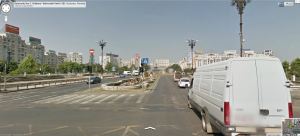
This is the middle of nowhere in the core of the capital.
The voids served two roles: to serve as collective housing for the communist elite thus being a symbol of authoritarian power and to set the scene for the grotesquely large People`s Palace, which is the second largest building on earth after the Pentagon. The quality of architecture is questionable, but the impact on urban life in Bucharest is dramatic. The voids hinder any type of dynamism or identity or Balzacian drama (as Colin Rowe puts it) within the city, they create placelessness and fragmentation of the city, and the most dramatic thing about it is that it was carved right in the heart of Bucharest, splitting the city into 2 halves.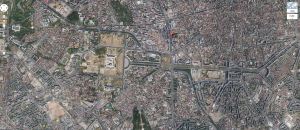
As Rem Koolhaas observes in his essay Exodus, or the Voluntary Prisoners of Architecture on the case study of postwar Berlin, that as soon as a city is divided into 2 halves, there will always be a good half, and a bad half, thus splitting the population by their social status. Bucharest went through the same thing, while the New Civic Center was being constructed, entire communities were uprooted and relocated and Bucharest was split into the rich and enterprising north half and the poor and disenfranchised south half. Population is split more or less evenly but the the office, retail, cultural, religious and services facilities are roughly 80% in the North side of the New Civic Center. 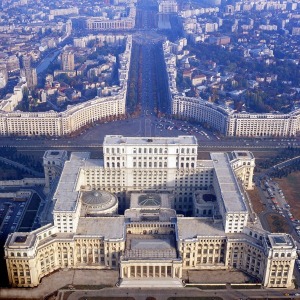
This massacre was done under the consent of modernism with the sole goal of imposing the regimes authority on the people, with complete and utter disregard to history, culture and tradition, this cannot happen again, transforming the boulevard in a symbol of power and the public square into a space of intimidation. A multifaceted dialog must be employed when dealing with an urban context, in contrast with the ignorant, naive and tautological solution of the tabula rasa . The post-communist period of privatization in Bucharest did little to change the course of the butchery, with hardly any public projects, the new star in the scene is the office building which is as ignorant to the human condition as the People`s Palace is an insult to the people. 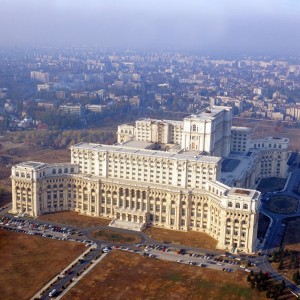
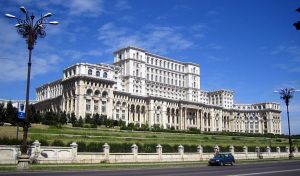
There can be change, if we seek the future in the past, the enthusiasm of modernism is still lingering, and the reserved pragmatism of post-modernism keeps things in scale, while a return to neo-romanticism might carve the way forward, tension and dialog are the key factors, the way to get the best of both modernisms. The tension between two opposing poles like the past and the future, unity and multiplicity, temporal and atemporal, purity and corruption, order and chaos will infuse “the common place with significance, the ordinary with mystery, the familiar with the sense of the unfamiliar and the finite with the semblance of the infinite”-Novalis.
